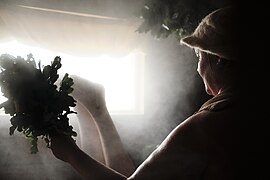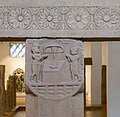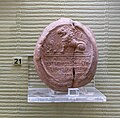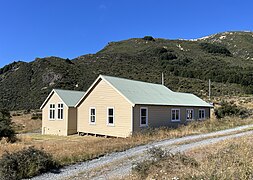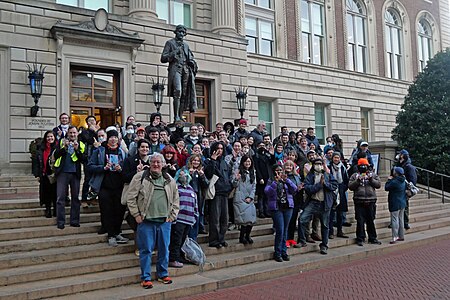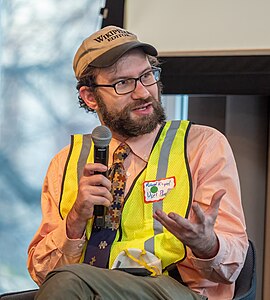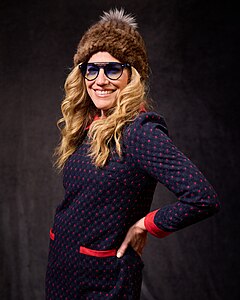GLAM/Newsletter/January 2024/Single
Wikipedia Day in Albania 2024
Wikipedia Day Edit-a-thon in Tirana, 2024
On the Wikipedia Day Edit-a-thon, we gathered on January 13th, to celebrate knowledge and community engagement. Wikimedians of Albanian Language User Group had a fantastic meeting, engaging 10 people to contribute to improving articles, discussing free knowledge, and increasing the quality of information available on Wikipedia.
The edit-a-thon also provided the opportunity for networking and collaboration within our community. By sharing ideas, we aim to improve articles and strengthen our connections as a collective force for positive change.
People improved 14 articles and added 4 pictures on Wikimedia Commons.
Here are some pictures from the event.
Social media
- We have a public Telegram channel (language used mostly Albanian) if you want to join and discuss Wikimedia projects.
If you want to see more about our activities, you can:
- Like our Facebook page, follow us on X formerly Twitter Twitter or Instagram.
First international public domain day celebration in Europe coming up on March 7
On January 1st of every year, new heritage works enter the public domain. However, oftentimes these works can still end up being inaccessible to the public, despite the fact that, legally speaking, nothing should prevent public access. In order to share experiences and best practices in opening up this material, we co-organise the annual Public Domain Day. In 2024, we will celebrate the public domain on 7 March, with numerous partners, local and international. We will use this day to discuss inspiring developments and use cases from Belgium and will take a look at the public domain through a European lens.
More info and registration: https://meemoo.be/en/training-and-events/public-domain-day-2024
A legal infrastructure for sharing public collections in Brazil: the case of Midiateca Capixaba
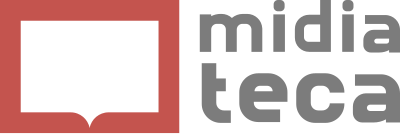
Wiki Movimento Brasil (WMB) and the Secretary of State for Culture of Espírito Santo (SeCult-ES) have developed an open licensing institucional practice, especially providing a legal infrastructure, for cultural institutions in this Brazilian state to have more confidence and less risk aversion towards contributing their collections on Wikimedia. This work is part of the Midiateca Capixaba partnership, that was announced in January 2023.
In the next months this project will come to an end and below are some of its phases and results.
Analysis of collections
The first phase of the project was the analysis of collections of GLAM institutions of the State of Espírito Santo for understanding the specific licensing layers of each collection/work; and the specificities required by each format/support.
During the first week of February 2023, our team visited some of the GLAM institutions that are part of Midiateca Capixaba and interviewed their directors as an starting point for understanding the content of their collections and answering questions about open licensing:
- Conselho Estadual de Cultura (CEC)
- Biblioteca Pública do Espírito Santo
- Fundo de Cultura do Estado do Espírito Santo
- Museu de Arte do Espírito Santo Dionísio Del Santo
- Palácio Anchieta
- Galeria Homero Massena
- Museu do Colono
- Arquivo Público do Estado do Espírito Santo
- Rádio Espírito Santo
- TV Educativa do Espírito Santo
- Orquestra Sinfônica do Estado do Espírito Santo
During the visit to the city of Vitória (capital of the state of Espírito Santo), our collaborators from InternetLab presented a talk on copyright law and open licensing at the auditorium of Museu de Arte do Espírito Santo Dionísio Del Santo. The presentation is also available online (only in Portuguese).

Creation of a Licensing Guide

The information collected during these visits guided the production of an open licensing guide for the daily use of all the State GLAM institutions. The final goal is to help GLAM staff make all the state collections available under open licenses at online platforms (especially Midiateca Capixaba and Wikimedia projects).
InternetLab and Wiki Movimento Brasil (WMB) worked together on writing a document which main topics are:
- Central definitions on copyright law
- FAQ: time limits, orphan works, works of art, limitations and exceptions
- Making collections available digitally
- Wikimedia in free digital dissemination
- Collaborative dissemination
- Measuring the media outreach
- Expanding the use of your collections
A final version of the guide will be released on Wikimedia Commons in the coming months. It is currently going through a final copydesk process.
Creation of a Complexity Scale
Based on the information about the collections gathered during the in-person visits to the GLAM institutions InternetLab created a Complexity Scale referring to the status of collections and future acquired ones in terms of open licensing. This scale crosses information on types of objects and sensible contents, and indicates the risk of disseminating the work under an open license: very high, high, medium, moderate, low and very low. A third column presents the items of the open licensing guide where one can get specific explanation on that issue.

Indication of Referral Strategies
While the guidance documents for daily use (Guide and Complexity scale) were prepared, Wiki Movimento Brasil, with the support of InternetLab, has been analyzing items from the collections of 10 institutions from Espírito Santo in order to help them with copyright issues and free licensing. In the end of this phase, we delivered one document per GLAM institution part of Midiateca Capixaba containing a brief summary of the general content of the institution's collection, a table with the analysis of part of its collection (the one to which we had access to the metadata), and the general Complexity Scale. The table with the analysis of the collections indicates 1) the current risk of releasing them under a free license, 2) justification of the risk and 3) actions for the correct free-licensing.
Based on that step, copyright-free materials were identified and we already uploaded 1,200 images from the collections of Palácio Anchieta, Galeria Homero Massena, Arquivo Público do Estado do Espírito Santo and Museu do Colono; as well as images of the interior of their buildings, most of which are of historical importance to the state.
![]() See the Midiateca Capixaba's GLAM page and the uploaded media.
See the Midiateca Capixaba's GLAM page and the uploaded media.
Templates for donations of collections under free licensing
In the last phase of this project, we produced templates of documents for donation of collections under free licensing (for the cases when the GLAM institutions receive collections from institutions, city halls and also individuals) and we also presented clauses to be added to public funding notices so that the products delivered by funded projects will already be under free licenses.
Once again, SeCult-ES is a pioneer when it comes to the free dissemination of Espírito Santo culture. And WMB maintains its commitment to supporting actions like this, which contribute to increasing the international visibility of Brazil's multiple cultures.

More information

If you want to know more about this project, you may access onde of the links below:
- Brazil's January 2023 GLAM Newsletter
- Brazil's March 2023 GLAM Newsletter
- Brazil's October 2023 GLAM Newsletter
- Website of InternetLab
- Museu Magazine
- Workshop sobre Direitos Autorais em Espaços Culturais
- Website of SeCult-ES
- Seminário Internacional Políticas Culturais, presentation by Victor Pavarin
- GLAMWikiCon 2023, mention by Lucas Piantá
January '24: Institute of Physics photos and Free culture discussion
Institute of Physics of the Czech Academy of Sciences
In cooperation with the Institute of Physics of the Academy of Sciences of the Czech Republic and thanks to the activity of wikipedian Sandwort, we uploaded the first 78 photos of scientific instruments and laboratories, educational events and interesting physical phenomena. You can see the photos here. The files are gradually being added to the corresponding Wikipedia articles. We plan to post more photos and images, e.g. of microscopes. Editing events are planned for staff, students and friends of the FZU to enhance articles in different areas of physics. You can participate in the project by placing images in articles in your language version of Wikipedia!

Evening of Free Culture: How we share, a panel discussion with Czech wiki-residents took place
Regular event starting a new year of Wikimedia CR took place again on Friday, January 19th. This time a tradition of Evenings of free culture was established, and brought several programme slots, including discussion on wiki-resident experiences, traditional Czech Wiki Photo 2023 exhibition opening and a slam poetry gig.
Wiki-residents from National Library in Prague, State Regional Archives in Prague or Museum of Eastern Bohemia were invited to the discussion panel called How We Share or Free Culture in the Practice of Public, Cultural and Memory Institutions to present their unique experience with coordinating events, uploading pictures, updating articles and wikidata database items operations. You can browse photogallery of the event here.

Photographing at the second half of 2023
Photographing at the second half of 2023


In the latter part of 2023, our work was related to photography. Finland participated in the Wiki Loves Living Heritage campaign, which culminated in celebrating the theme year of Living Heritage in Oodi, where the winning photo of the national campaign was awarded. We also continued our Helsinki island documentation trips by photographing Kuivasaari, Suomenlinna, Hylkysaari, Parliament House and Vallisaari. At the end of the year, Finnish Wikipedia participated in a science article writing and photography campaign coordinated by Wikimedia Eesti.
Improving Wikimedia Commons Finna photos
Another heavily aspected focus was to start improving the photographs uploaded from the National Museums Finna.fi service to the Wikimedia Commons. The first main target was reliably identifying and connecting Wikimedia Commons images to corresponding images in Finna. As the image information written on the Wikimedia Commons image page could have been non-machine readable, incorrect, or expired, the first task was to calculate perceptual hashes for images and match images using these. After this, we updated up-to-date source information to Commons images wikipage and SDC. We also systematically started adding SDC information about photographers, licenses, and dates. We also reuploaded the older low-resolution photos with improved quality, as museums have substantially increased image quality in the last five years. We continued this by writing a Finna-to-Wikimedia Commons metadata parser, which was then used to upload images from the JOKA Journalistic photo archive to Wikimedia Commons.
In 2023, we indexed approximately 15M Wikimedia Commons images using Python’s image hash library. We also updated information to 39000 photos and uploaded 3900 photos.
- Links
- Celebrating the theme year of living heritage in Oodi (Youtube, in Finnish)
- Wikimedia Eesti & Wikimedia Suomi expedition to Suomenlinna
Finnish Wiki Loves Living heritage finalists
-
Traditional Finnish sauna whisking by a professional sauna healer Kaisu Mokkila. 3rd place in international competition /Ville Kurki
-
Sailing with a talonpoikaisvene (traditional peasant boat) / Juha Karikoski
-
workshop at the Finnish Museum of Games in Vapriikki, Tampere. / Saarni Säilynoja
-
Helsinga - Helsinki middle age festival 2023 / Kari3562
Documenting ASI (Archaeological Survey of India) Museums in Bihar
Wiki Exploration Program
With the Wiki Exploration Program, the West Bengal Wikimedians User Group has been documenting archaeological and heritage sites in Eastern India for the past six years. Museums have also been an integral part of this project. For example, six museums were documented during the Wiki Explores Bihar – Phase II.
During January, photos of two of these were uploaded along with the description to Wikimedia Commons.
Archaeological Museum, Bodhgaya
Bodh Gaya, associated with the Mahabodhi Temple Complex, is one of the main Buddhist pilgrimage sites. The museum located nearby opened in 1956 and houses several sculptures, artefacts and antiquities related to Buddhism and Hinduism from the 2nd century BC to 11th century CE, including some objects from the Mauryan, Gupta and Mughal periods.
-
Buddha Life Events
-
Vases
-
Remains of the railings which once enclosed the Mahabodhi Temple
-
Spout
-
Stupa
Nalanda Museum
Established in 1917, the Nalanda Museum houses the artefacts found during the excavation of the Nalanda Mahavihara, considered to be the World’s first residential university. There are also a few objects found from the neighbouring villages and Rajgir. Around 350 artefacts are on display, and more than thirteen thousand are kept in reserve.
-
Buddha
-
Charred rice found in the granary
-
Stucco works
-
Crown
-
Statue of Avalokiteshvara
-
Ishana Singh
Public Domain Day & Monumental Moments
Retrospective: Public Domain Day celebration in the Netherlands

On Friday, January 12 in Hilversum at the Institute for Sound and Vision, employees of heritage organizations, Wikimedians and interested parties celebrated Public Domain Day together. This day was created to celebrate the expiration of copyright restrictions on many works. As is widely known in the free knowledge movement, works created by Dutch makers who died in 1953 are now also in the public domain and can be used for many more purposes. At the same time, the Dutch version of Public Domain Day draws attention to the importance of supporting the access, use and reuse of collections, as this enables creators to create new works and contribute to the creative ecosystem.
Wikimedia Nederland, together with the Royal Library, provided a workshop on uploading public domain photos to Wikimedia Commons during the event. This resulted in seven new photos, including photos of photographer and resistance fighter Emmy Andriesse, who died in 1953.
More works of international makers that were added to or restored on Wikimedia Commons because they entered the Public Domain on 1 January can be found at this page on Wikimedia Commons.
Monumental moments for Wiki Loves Monuments Sint Eustatius

Last year the Culture Department of St. Eustatius organized the international photo competition Wiki Loves Monuments for the first time. As part of their participation, the project team organized an exhibition with a selection of the 97 photos submitted to the competition in a special location: the Madam Theater, a former house then brothel then theater then cinema, and one of the monuments the island has to offer.
The top ten photos were announced in this special setting. These photos participate in the international round of the photo competition. During a festive award ceremony on location in the exhibition, the top three prize winners were announced: the first prize went to the photo of the Dutch Reformed Cemetery, the second prize was for the photo of a cannon in the Corre Corre Bay and the third prize was a photo of the Cool Corner bar at night. The organization emphasizes the importance of photo competitions such as this to promote the island's cultural heritage and engage the community, and hopes to host the event every year.
Aotearoa Wikipedian at Large, and Auckland Museum updates
Aotearoa Wikipedian at Large

From mid 2018 to mid 2019 I (Mike Dickison) was New Zealand Wikipedian at Large, supported by a one-year project grant from the Wikimedia Foundation. My job was to travel the length of New Zealand to help heritage and research organisations engage with Wikimedia projects as a mobile Wikipedian in Residence, and support the New Zealand editing community through meetups and workshops. I continued as a Wikipedian at Large on the West Coast of the South Island (see September 2023 report) When newly-formed Wikimedia Aotearoa New Zealand gained continuing funding from the WMF in 2023, funds were set aside to continue supporting the role of a Wikipedian at Large, based on its demonstrated success in spurring the growth of the Wikimedia Movement in Aotearoa. I applied and was the first to be awarded the six-month role.
The first Aotearoa Wikipedian at Large project is based in Christchurch, Canterbury, from 15 January to 15 July 2024. Like the West Coast Wikipedian at Large roles, it will be based in one place but work with multiple organisations in succession to tackle short, manageable projects that will give an immediate positive experience and encourage the organisation to keep engaging with the Movement. In addition, we will be setting up monthly Wikimedia meetups in Christchurch, running free online and in-person Wikimedia workshops, and working with GLAM institutions to host edit-a-thons.
Cass field trip
The Wikipedian at Large project kicked off with a visit to Cass Field Station, the University of Canterbury's research station near the tiny settlement of Cass in inland Canterbury. The Field Station was built 110 years ago, and for decades students have taken an annual field trip there, where they learn about local botany and ecology. As well as enriching Wikipedia and Wikimedia Commons content on the history and botany of the area (including creating an article about the field station), I taught students how to upload photos to Wikimedia Commons and iNaturalist under an open licence. The iNaturalist project they were required to contribute to as an assignment now has hundreds of photos available under a Wikimedia-compatible licence (the default iNaturalist licence is CC BY-NC-SA.)
-
An early Cass field trip
-
Pieter Pelser explaining plant collecting
-
Original field station buildings
-
Students collecting plants
Research and chats with teach staff uncovered physical photographs stretching back decades, and the existence of further out-of-copyright historic images of the area that could be added to Commons.

One notable feature of Cass is its small railway station, immortalised in an iconic painting by New Zealand artist Rita Angus; the University of Canterbury owns an Angus painting of the Field Station. The Cass painting is owned by the Christchurch Art Gallery, the next institution to host the Wikipedian at Large. While based there I'll work on the works of Rita Angus as well as the recent exhibition Ink on Paper, an overview of New Zealand printmakers some of whose work has entered the public domain.
Auckland Museum Edit-a-thon

As a part of the 2023–2024 Auckland Museum Wikipedia Summer Students Programme, our students were tasked to organise and plan an edit-a-thon from scratch. Our students held the event on 27 January, Trailblazers of Tāmaki Makaurau (Commons), which helped teach new editors how to edit Wikipedia, focusing on personalities from the Auckland area. 21 people attended the event, learning the basics of editing, and a total of seven articles were updated, and three new draft articles were created by the participants. Students and new editors had a great time!
Auckland Museum local history project

In January 2024, the first major milestone of Auckland War Memorial Museum Tāmaki Paenga Hira's project using Wikipedia as a tool to support local history in Tāmaki Makaurau was reached. New Zealand teachers were tasked with developing new content for the national history curriculum, which puts focus on local stories relevant to students' local areas. A major finding from the Wikipedia, Auckland Museum and the Aotearoa New Zealand Histories curriculum - Final Report (2022) was that New Zealand teachers, when faced this task, felt that they were unsure where to even start looking for information, and that Wikipedia articles could serve this role. Creating articles for every suburb in Auckland is a gigantic task, and teachers reported that articles on their general areas were often extremely helpful. Over the course of the project, a set of priority levels were established:
- Priority 1: subregions of Auckland (8 in total)
- Priority 2: regional centres of the Auckland Region (12 in total)
- Priority 3: suburbs with more than 5,000 students (15 in total)
- Priority 4: suburbs with between 1,000-4,999 students (40 in total)
- Priority 5: Any place with a school
- Priority 6: Any place where people live
- Priority 7: Northern Waikato communities that have strong ties to the Auckland Region
Goal #1 was reached on 12 January, when the article for the last subregion, the Hibiscus Coast, was improved. Soon afterwards, goal #2 was met, when the article on Waiuku was improved on 3 February. Remaining time on the project will focus on the four remaining Priority 3 articles, plus redeveloping the Auckland and History of Auckland articles.
An update on the Wikimatejko editing action and an invitation to the international community to join the action
Second stage of WikiMatejko editing action
-
Examples of images about which articles were created as part of the WikiMatejko action

January is an intensive time of work for the WikiMatejko editing action implemented in cooperation with the National Museum in Krakow.
The aim of the action is to enrich Wikipedia and other sister projects with high-quality content, illustrations and data related to the painter Jan Matejko, his life and work.
To participate in the action we have invited newcomers, students of such subjects as art history or art education, who are interested in learning new digital competencies and familiarizing themselves with the specifics of museum work. Some of the students participating in the action are doing student internships. A total of 16 people participate in the action, who are supported by experienced Wikipedians.
In the first stage of the action, students were trained to edit Wikipedia in order to create and develop Wikipedia articles on Jan Matejko and his works.
The second stage, which began in January, included training on Wikidataby Powerek38, on Wikipedia translations by Bonvoland on creating open educational resources based on Wikimedia projects. As a result, we want the participants of the action to develop Wikidata, as well as make translations of the developed entries from Polish to English.
The second phase of the WikiMatejko campaign also included an online workshop on creating open educational resources. This is another interesting way of combining the two areas of education and GLAM, as the workshop was created and conducted by Kamila Neuman, Open Culture Manager, and Wioletta Matusiak, Training and Development Manager at Wikimedia Poland. As part of the workshop, Museum professionals talked about the educational materials that are created at the museum for different audiences. In the next step, the participants are to develop proposals for educational materials based on content from Wikimedia projects about Jan Matejko and his works. Then they will be consulted with experts from Wikimedia Poland and the Museum. In the last step they will be graphically processed and published.
The end of the action is planned for mid-March, and at the end of March we plan to summarize the results of the 1st and 2nd stage of the action.
We see the action as a way to engage the public in GLAM-Wiki activities and disseminate the museum's collection. It's also a testing ground when it comes to working with students who, by reason of their studies, are interested in art and at the same time want to develop their digital competencies. It's also a training ground when it comes to developing activities in the field of cooperation between novices and experienced Wikipedians, and involving museum specialists in the process of editing Wikipedia. This is an experience from which we are learning a lot, and we want to draw these lessons in order to better implement future activities that will involve students in GLAM-Wiki activities and at the same time prepare them to enter the job market.
If you would like to learn more about WikiMatejko and other GLAM-Wiki activities please contact with Kamila Neuman, Open Culture Manager at Wikimedia Poland.
Invitation to join WikiMatejko and translate articles to other languages

We started to translate articles to English in order to encourage the international community to translate them into other languages.
We would like to invite the international community to translate the articles into other languages. Therefore, we have created a subpage of the project in English, which you can find here. It will feature articles translated into English, and we invite you to translate them into other foreign languages.
We will be pleased if you join the international part of Wikimatejko in this way. Go ahead and join the project and keep an eye on the page for more articles to be translated, which will appear until mid-March.
Unveiling Catrapilha: A ReacTive approach to GLAM content import

Embarking on the journey of file uploads to Commons some 15 years ago was nothing short of an adventure. Yet, amidst the excitement, I was soon faced with the pressing issue of the glaring absence of adequate tools tailored for seamless mass uploads. Whether sourcing content from platforms offering free licenses or delving into the realms of the public domain treasures, whether in Glam projects I helped or coordinated, the goal was twofold: to ensure maximum efficiency and enjoyment for all involved. However, achieving this was faced with technical hurdles and battles against the mind-numbing monotony of organizing uploads and the endless cycle of copy and paste, the tedious task of reorganizing information from source to upload, which tested patience and resolve.
So, when the opportunity presented itself two years ago, right in the midst of the pandemic, to pivot my professional career back to software development after nearly two decades on hold, I immediately thought in applying it to something that would facilitate and make more pleasant and exciting those boring-to-tears and error prone Commons massive uploads. The result is Catrapilha - an experimental upload tool built in React, a popular free and open source JavaScript library focused on building user interfaces. The developing tool has been tested with the Arquipelagos image database GLAM, an academic project hosted in a platform built with WordPress and managed by Rui Carita, Emeritus Professor at the University of Madeira, used by both researchers and licentiate and master university students as support for Carita classes on History of Madeira - an insular African ultraperifery of Europe, and autonomous region of Portugal, part of Macaronesia - and the global oceanic and coastal spaces where the Portuguese folk mostly operated in the Age of Discoveries. Professor Rui Carita, well aligned with our mission at the Wikimedia Movement, was kind enough to facilitate under a free license all the original materials produced by him and a number of collaborators - mainly photos, paintings and schemes - present at the Arquipelagos image database, adding to the scores of well sourced and better described public domain files, along with the text accompanying these images. At present, the steadily expanding Arquipelagos image database comprises approximately 100,000 files of educational and cultural significance, each accompanied by its respective description. Many of these files contain original content or materials in the public domain, making them suitable for importation to Commons and reuse in various Wikimedia projects, as several already have been.

The Catrapilha tool, named after the Madeiran word for the heavy machines which are able to push and carry stuff from one side to another, bulldozers (from the Caterpillar American brand), is at this point a straightforward Web app consisting in a main view displaying an image list, with a maximum number of images defined by the user, populated by the contents of the source platform via REST APIs or another collecting technique. The files that were not yet uploaded to Commons- or discarded, if copyrighted or out of scope - are shown, consisting in the current working collection. Clicking in an image thumbnail, the user is transported to the detail view of that file, with the possibility of navigating the collection back and forward. At the detail view, a draft for the file body to be uploaded along with the image is presented in an editable text input, including the filedesc and license-header sections with an initial text that the algorithm was able to build automatically, presented to the user for final corrections and polishing before the upload. The user can either upload the file to Commons, or discard it. After each of those actions, the detail view moves to the next image in the collection, until all the files are processed, after which the user can return to the image list view to collect more files from the source to process. The uploaded/discarded image list is stored (and fetched) in the universal and convenient JSON format, either locally in a .txt readable file, or online, e.g. at the users' Commons profile, whatever is more practical or suitable for the user.


More than 1700 files using a variety of different licenses were already successfully uploaded from Arquipelagos to Commons using the Catrapilha tool, in a very smooth way which leaves to the tool the vast majority of the tedious task of copying and reorganizing all the information gathered through the WordPress REST APIs in a meaningful way recognized by Commons, leaving to the operator/uploader not more than a quick review before hitting the upload button. A set of categories can be defined at the tool, so that most of the curation work would be already done after upload. The tool was successfully tested operating more than one project at the same time, with repositories built in WordPress, Archeevo and Flickr, but I'm convinced it can deal with virtually anything.

Please note that this is not an out-of-the-box tool ready to use, but rather an approach to solving the stated challenges using React. It is mainly targeted to React coders, or people willing to learn and experiment with React over the Wikimedia REST API set, something I personally find extremely amusing and thrilling. The tool is expandable to include as many different projects as you want, each with its proper configurations and settings, what can be achieved by adjusting the provided project specific list and detail components, and adding new ones as needed following the same rules. It can be expanded to include wikidata editing, either per se or as part of a GLAM mass upload campaign, allowing for simultaneous Commons image uploading and correspondent Wikidata editing, if that is the case. At this point it's not fully automated, though fully automating it, if needed, is a very simple step.
The Catrapilha code is hosted and version managed at GitHub, where you can easily fork it and start your version of the tool, or simply reuse it at your own tool. The Arquipelagos project is used as a showcase of how things may work. Please have in mind that this development is done entirely as a volunteer in my spare time, so some code is not as polished and clean as I would like to, and there are still a number of non critical bugs I'm working to fix. Note that in order to use it, you'll need to create a private Config.json with at least your Access token, and your Client application key and Client application secret, allowing Catrapilha access to the wikimedia projects using your credentials. Be careful to never share this information publicly.
As the Catrapilha tool continues to evolve, paving the way for smoother and more efficient uploads, the journey that began with Arquipelagos now extends its reach to include other destinations and diverse repositories across the digital landscape, hopefully also providing a number of useful React code examples and implementations for GLAM-related needs. Thank you very much if you were brave enough to read this till this point, and please leave a message in my Commons talk page if you want further information or help with this tool.
Useful links:
- code at GitHub
- Files uploaded with Catrapilha to Commons (all repositories)
- Files uploaded from Arquipelagos (all types of upload)
- Arquipelagos image database
Freedom of Panorama in Sweden
Swedish Freedom of Panorama
Wikimedia Sverige and Eric Luth was one of the experts invited to participate in a public inquiry convened by the Swedish government, to review and propose modernizations of the exceptions and limitations within Swedish copyright law. Such inquiries are the first step of the Swedish legislative process.
One of the key areas under review is the freedom of panorama provision, and the proposal (in Swedish) was handed over to the Minister for Justice on 19 January. The proposal will be commented on by interested parties before it moves on in the process of becoming law, and following the discussion on Commons there are several issues to look into that could also be of interest to others within EU and working with images of both sculptures and buildings on Commons.
Except for the Freedom of Panorama review, the proposal includes extended possibilities for GLAM institutions to digitize their collections, including for research and documentation, and increased possibilities for researchers to share copyrighted material within research projects or for peer review. The proposal also includes a brand new parody exception, among many other things.
Indonesian praise for an Ottoman photograph of Arabia
Khalili Foundation

Katie at Wikimedia UK and I adapted my summary report for 2023 into a blog post for the Wikimedia UK web site, which went live on 29 January.
The Empire of the Sultans article appeared in Did You Know for 24 hours on 18 January where it was seen by 4.8 million visitors, becoming the 25th DYK from this project. A photograph of the Kaaba by Muhammad Sadiq Bey was given a Featured Picture award by Indonesian Wikipedia, decided unanimously by nine reviewers. It ran as Featured Image of the Day on 28 January. This is the first time Indonesian Wikipedia has recognised the Khalili Collections in this way, and the first time this particular image has been given a Featured Picture award.
We are looking to run more edit-a-thons this year. I have been in touch with art historians who work outside the Western canon in four universities. Two have responded so far, both tentatively positive, and I will follow up with them later in the year.
With the recent additions of Moulay Ahmed Drissi, N. R. Sardesai, and D. C. Joglekar, all the non-Western artists listed by the Global visual arts taskforce (identified by the Ahmed and Poulter research) now have representations on Wikidata. These representations give some very basic facts about each artist and pointers to further information, and they can be used by multiple Wikipedia versions and apps, as well as by Google and other platforms to distinguish these artists from people with similar names. At the time of the research in 2021, 14 of the 283 artists had no Wikidata representation.
Work has continued on the article about the Heaven on Earth: art from Islamic lands exhibition and some small improvements to the Empire of the Sultans article. I have taken delivery of the Meiji no Takara volumes (catalogues of the Khalili Collection of Japanese Art) and the Linda York Leach "Paintings from India" book (a volume of the Khalili Collection of Islamic Art catalogue). The latter has already been used to extend the Gulshan-i 'Ishq article.
The open peer review for the Cultural diversity article is over. No problems were identified other than the article needs to be longer to cover its complex subject. Having overhauled what was a problematic article, I intend to leave the subject for now.
There were no new image uploads this month. There was one new article: the Sitara (textile) article that I wrote in English has been translated into Uzbek: the first new article in Uzbek language from this project! GLAMorgan reports 5,958,489 image views for January, from 92 different wikis.
Wikipedia Day 2024; edit-a-thon; meetups
New York City - Wikipedia Day 2024
Wikimedia NYC held a meetup, Wikipedia Day 2024 at Columbia University Graduate School of Journalism.
-
Group photo
-
Richard Knipel
-
Bias and AI and Wikipedia panel
There are many videos
-
Reliable sources
-
Bias and AI and Wikipedia
-
Future of Wikipedia
Utah - Wikipedia Day 2024
The Sundance Film Festival, and Utah Wikimedians, held a meetup, Utah/Wikipedia Day 2024.
-
Anita Greenspan
-
Safiyya Ingar
-
DEVO - Chris Holmes
-
Dana Marisa Schoenfeld
-
Olga Lucovnicova
AMS edit-a-thon
The American Meteorological Society, and Wikimedia DC held a workshop, AMS edit-a-thon
Aurora Hills Library meetup
Aurora Hills Library and Wikimedia DC held a meetup, Aurora Hills library edit-a-thon.
Fred Korematsu Day
San Diego Public Library and San Diego Wikimedians, held a meetup, San Diego/January 2024
Events! Events!



AvoinGLAM presents two events we are preparing. Mark your calendars for the GLAM+Commons+AI Sauna and join preparing a Media Art History event for September/October!
GLAM+Commons+AI Sauna
AvoinGLAM invites the Wikimedia tech + GLAM community to Helsinki 6–7 May after the Wikimedia hackathon in Tallinn 3–5 May, 2024 to envision the relations between GLAM, the open ecosystem and AI together with major Finnish GLAM institutions, AI research projects and companies.
Monday 6 May
- Inspire talks – In the morning, inspire talks kick off the event at the Reading Room of the National Archives of Finland.
- Workshop + sauna + sea pool – The afternoon workshop at Allas Sea Pool at the harbor brings all the participants together to decide what are the issues we must work on. It is followed by sauna, pool and mingling.
Tuesday 7 May
- Hands-on – The second day is the playground for GLAM + Commons + AI. The day is for testing, talking, learning, hacking, whichever is the best way for anyone to get a better understanding how AI, cultural heritage and the open ecosystem work together. Program for the day will be crafted during the spring in collaboration with the GLAMs, wikimedians, research projects and companies to find the common interests.
Tallinn is only a couple of hours boat trip away from Helsinki. Plan your trip via Helsinki and join the event. We do not have scholarships to join this event only. Neither can we cover the cost of accommodation or food. The event will be free of charge.
Get inspired by checking out the moodboard and the project page! Follow the page to see how the program develops.
Media Art History
Media Art History in Finland is a wikiproject by AvoinGLAM to gather and display the history of media art from Finland. It is created in the memory of Minna Tarkka, Finnish curator, educator, artist and activist who passed away in 2023.
Database
MEHI – Media Art History in Finland project was a tour-de-force of Finnish arts organizations. As part of a wide array of activities, the project produced a database of artists and media artworks. We imported the data to Wikidata and created pages on Meta-wiki to display the information. Now that the project period is over, it is still possible to add more information and images directly to Wikidata. The project pages in the Finnish Wikipedia additionally host an editable and linked timeline of media art and a bibliography.
Looking back: Media Art History in the Future Seminar 2024
The closing seminar of the MEHI project was held at MUU Helsinki Contemporary Art Center, Kaapelitehdas, Helsinki Fri 26 January. We presented the pages that display the materials in the Wikimedia projects and discussed the role of open licensing and sharing with artists and actors in the arts organizations. Our hope is to encourage the artists to share at least descriptive images of their works openly as well as to build common understanding about open licensing.
Looking forward: Seminar and collaboration
AvoinGLAM prepares to organize an event bringing together other initiatives recording and archiving media art history. The preliminary date is around September/October. If you work in this area, please get in touch with us!
Read the Open Culture materials in the MEHI project (in Finnish).
New OpenRefine documentation for Wikimedia Commons
New OpenRefine documentation for Wikimedia Commons
The general info and documentation pages for OpenRefine on Wikimedia Commons have been updated and improved.
On Wikimedia Commons, you can now find:
- A general info page on OpenRefine
- A detailed page on how to upload files to Wikimedia Commons with OpenRefine
- A detailed page on how to edit files on Wikimedia Commons with OpenRefine
- And a page with advanced tips and tricks
Please help by improving, updating, and adding to these pages!
By popular requests, the documentation includes very short demo videos. They have subtitles (closed captions) which can be translated on Wikimedia Commons.
WiLMa Updates, OpenRefine training, Biodiversity, and Librarians
WiLMa pilot project report and Grants session for the Learning Partners Network
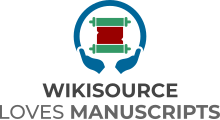
Wikisource Loves Manuscripts (WiLMa) pilot in Indonesia has concluded and the lead institute for the project, PPIM, published the final report in January 2024.
A session on grants was organized for the WiLMa Learning Partners Network, which was delivered by Davit Saroyan from Community Resources on 25 January 2024.
OpenRefine training for all!

In 2021-2022, OpenRefine received funding from Wikimedia to add Structured Data on Wikimedia Commons and batch edit functionalities to the tool, which was accomplished with a Wikimedia Commons extension. The team executed this task and delivered it very successfully. A year later, we understood that it would be important to invest in OR training for long-time users to understand how to work with the Commons extension, as well as for new contributors who want to work with the tool and images. This work would be part of the WMF's support for Wikimedia Commons.
Currently, there is a Train-the-Trainer advanced cohort taking place, for long-time OR users or Wikimedians who usually accomplish batch uploads. Following that, Sandra Fauconnier, the main person coordinating all of these activities, will launch the OpenRefine for Wikimedia Commons: the basics on WikiLearn. Currently, the course is going through its beta reviews and will be translated into Spanish, French, and Portuguese. This second course is aimed at newcomers. In a few months, there will also be a Wikidata WikiLearn course available.
If you want to know more about what was accomplished by OpenRefine in the last few months, Sandra just published the Midpoint report for the ongoing project.
A new Working Group is in sight!
The Biodiversity Heritage Library is considered, according to English Wikipedia, the world’s largest open access digital library for biodiversity literature and archives. And so, therefore, BHL has an important Wikimedia presence.
On the Files from the Biodiversity Heritage Library category, there are 304,023 media files and 61 subcategories. A lot of these came via Flickr, where the institution also has a major presence. On Wikimedia Commons, other than the category, BHL also has a Commons page and an institution page.
This relevant Wikimedia Commons presence came from the work of volunteers, such as Fæ or Ambrosia10, and many others who contribute to the topic of biodiversity. These efforts were noticed by the Biodiversity Heritage Library and a major GLAM-Wiki initiative started. In June 2023, JJ Dearborn, BHL's Data Manager, published the paper Unifying Biodiversity Knowledge to Support Life on a Sustainable Planet: A Wikimedia Projects Whitepaper, which was a comprehensive analysis of the Wikimedia projects and how they can serve the broader goal of making data more accessible to support research related to the climate change. We talked more about the whitepaper on the newsletter from April 2023 and May 2023.
Now, the initiative is taking more shape. A Wikimedia mailing list is available (find it here), as well as a Telegram group, and an upcoming project page on Meta-Wiki. More importantly, the Biodiversity Heritage Library just made it official the creation of the BHL Wikimedia Working Group, which will be chaired by Siobhan Leachman. The project will also have a dedicated Consultant and a Wikimedia in Residence soon.
A series of blog posts to understand Librarians and data
During the 2023 LD4 Conference on Linked Data, two members of our team organized a collaborative workshop about The Present and Future of Libraries through Wikimedia. The goal of the session was to understand the role of Wikidata, Wikibase, and Structured Data on Commons (SDC) in libraries. As a way of deep dive and understand the results from this session better, we are launching a series of blog posts on Diff.
Two of the six posts are already out and we will be posting them every few weeks. Currently, the first one published is about the overall workshop and it's titled The Future of Wikidata + Libraries (A Workshop). The second post is about the first part of the session, which was thought to not only be an exercise to get to know each other, but also the librarians in the Wikidata world, by collecting stories about the personal journeys that led the workshop participants to become librarians engaged with Wikidata.
The following posts will be about examples of libraries using Wikidata, popular Wikidata tools, the main challenges of Wikidata for Librarians, and how to imagine together a Wikidata future for Librarians. Stay tuned for the next posts!
February's GLAM events
| <<< previous month | February 2024 | next month >>> | ||||
|---|---|---|---|---|---|---|
| Monday | Tuesday | Wednesday | Thursday | Friday | Saturday | Sunday |
| 29 |
30 |
31 |
1 |
2 |
3 |
4 |
| 5 |
6 |
7 |
8 |
9 |
10 |
11 |
| 12 |
13 |
14 |
15 |
16 |
17 |
18 |
| 19 |
20 |
21 |
22 |
23 |
24 |
25 |
| 26 |
27 |
28 |
29 |
1 |
2 |
3 |











